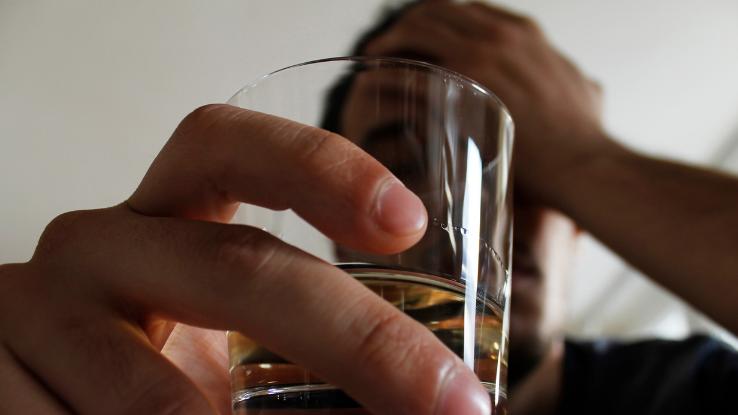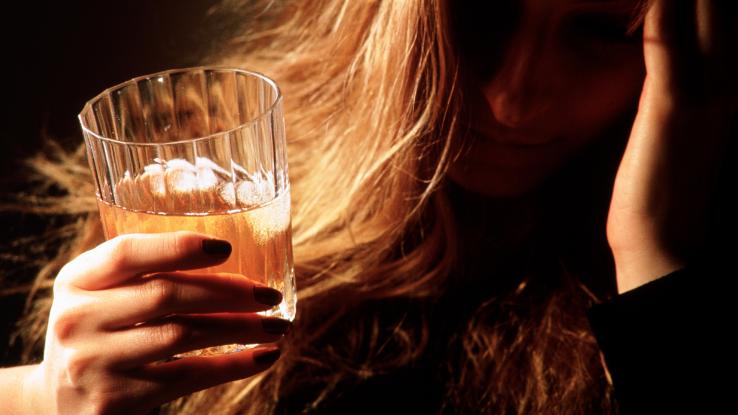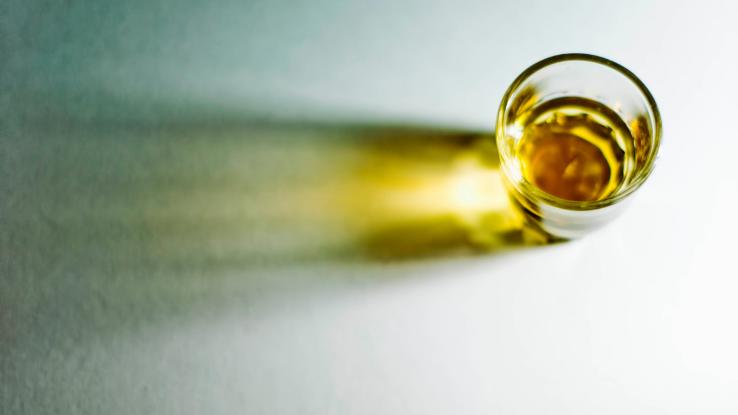Review of Family Therapy Treatment Outcomes for Alcoholism
What Is Alcoholism? Take chances Factors, Symptoms & Treatment

Consuming alcohol is a socially accustomed activeness. From happy hours to family unit gatherings, alcoholic beverages are a mutual staple at social events geared toward adults. However, alcohol consumption is not without take chances. That is, some individuals may consume an unhealthy amount of alcohol, or find that they are living with an addiction to it. With this in mind, nosotros are taking a wait at booze-related disorders, including alcoholism, which, oftentimes, are illnesses that folks are not entirely enlightened of, even if they are actively impacting their lives and wellness.
What Is Alcohol Use Disorder?
Alcohol Apply Disorder (AUD) is a spectrum of affliction caused by the consumption of excess alcohol. AUD tin be mild, moderate or severe and is characterized by cravings for alcohol; a loss of control over how much or how oft alcohol is consumed; an increased tolerance to the effects of alcohol; and a development of negative concrete or psychological symptoms if alcohol is non consumed. Astringent forms of AUD are commonly referred to equally alcoholism or alcohol addiction, which occurs when an individual has a dependence on alcohol consumption.

Much similar any other drug habit, alcoholism causes an individual living with it to have an uncontrollable desire to consume excessive quantities of booze. Alcoholism tends to develop every bit a result of a menstruum of alcohol corruption or consumption of unhealthy amounts of alcohol. Unhealthy consumption tin can refer to the sheer book of alcoholic beverages consumed in one sitting, or the frequency in which alcohol is consumed on a weekly basis.
The 2020-2025 Dietary Guidelines for Americans recommend keeping to a limit of two (2) or less drinks per solar day for men and 1 (i) or less beverage per day for women.
One alcoholic beverage contains 14g (0.6oz) of pure alcohol. Examples of one alcoholic potable include:
- 12 fluid ounces of regular beer (5% alcohol)
- 1.5 fluid ounces of liquor (40% booze)
- 5 fluid ounces of wine (12% booze)
Binge Drinking
Binge drinking is defined past The Substance Abuse and Mental Health Services Administration (SAMSA) as consuming five (five) or more drinks in a day for men, or iv (four) or more than drinks in a day for women.
Heavy Alcohol Utilize
SAMSA defines heavy alcohol use as engaging in rampage drinking on five (5) or more days in a month. Exceeding daily recommended limits, rampage drinking, and heavy alcohol use are all associated with the development of alcohol-related wellness bug.
Causes & Chance Factors
In that location is no specific cause that leads to the development of an AUD. A person can develop a condition over fourth dimension due to diverse factors in their life. Some studies accept suggested a correlation between alcohol use disorders and genetics. Nonetheless, an inherited dependency on alcohol can also stem from being around a parental figure who is abusing booze or dealing with alcoholism. In other words, it is difficult to determine whether alcoholism is, indeed, inherited or influenced by ecology factors.

Risk factors for the development for alcoholism include:
- Having a parent who lives with alcoholism
- Low self-esteem
- Relationship problems
- Stress
- Low
- Being surrounded past people who suffer from alcohol use disorders, including alcoholism
- Easy access to alcohol
- Suffering from hardships, particularly economic or emotional hardships
- Live in an environment where excessive alcohol consumption is not just accepted, but encouraged
Signs & Symptoms
Common signs of alcoholism include:
- High irritability or emotional distress unless alcohol is being consumed
- Endangering oneself for the sake of drinking (drunk driving, drinking with a health condition)
- Inability to control the consumption of booze
- Drinking alone
- Constantly looking for excuses to consume booze
- Using alcohol for celebratory purposes (drinking subsequently a skillful day at work)
- Using alcohol to gratify a troubling situation (drinking afterwards a bad day at work)
- Inability to resist alcohol at the mere sight or odor of it
- Hiding the habit
- Becoming violent or emotionally unstable while drinking
- Missing piece of work, school or important events due to abiding inebriation
- Physically and emotionally neglecting oneself
- Ignoring ane'southward physical appearance, or a lack of personal hygiene

Common symptoms of alcoholism include:
- Uncontrollable shakes and tremors, especially around the hands later on alcohol has non been consumed for a long flow of time
- Retentivity loss
- Blacking out
- Inability to think clearly
- Mood swings
- Constantly smelling like alcohol
- Anxiety
- Indisposition
Many of these symptoms fall under the category of alcohol withdrawal. Any person who is showing significant signs and symptoms of alcoholism needs to seek out professional person assistance immediately.
Handling for AUD & Alcoholism
While the primary treatment for alcoholism is to end drinking completely, one may notice that the addiction to booze is so stiff that quitting is hard, especially without professional assistance. If the booze dependency is not as well severe, a person tin can start slowly reducing the amount of alcohol that they are consuming on a weekly footing to more moderate levels.

However, those who take been living with alcoholism for quite some time may have a much more challenging time when information technology comes to managing their habit. Treatment centers and facilities are available to assist with severe cases of alcoholism.
In fact, only going without a unmarried drop of alcohol in an aficionado'south system for 24 hours is enough to cause a severe case of alcohol withdrawal, likewise known as delirium tremens. This can issue in:
- Fever
- Seizures
- Severe confusion and agitation
- Hallucinations
- Loss of bodily function
It is for this reason that professional aid is necessary when it comes to helping a person with alcoholism wean off alcohol. One time that person's health is stabilized, they may be released from a treatment facility into the care of friends or family unit members. However, the treatment does not stop in that location; as with any addiction, there is no "cure." Instead, ane must manage their habit in order to prevent a relapse. Support groups for those going through alcohol recovery can be a crucial component when information technology comes to preventing a relapse. These programs offer peer support via counselors, mentors, and other folks who are dealing with alcohol dependency.
Those concerned about themselves, or a loved one who is living with alcoholism, should speak with a doctor or healthcare professional for further assistance.
Resource Links:
- "Alcohol Use Disorder" via Medline Plus
- "Alcohol Utilize Disorder" via National Institute on Alcohol Corruption and Alcoholism
- "Drinking Levels Divers" via National Establish on Alcohol Abuse and Alcoholism
- "Alcohol" via Centers for Illness Control and Prevention (CDC)
- "Alcohol misuse" via National Health Service
- "2020 – 2025 Dietary Guidelines for Americans" via U.Due south. Section of Agriculture and U.S. Department of Health and Human Services
- "Alcohol Use Disorder" via BMJ Best Practice
- "Alcohol use disorder" via Mayo Dispensary
Source: https://www.symptomfind.com/health-conditions/alcoholism-condition?utm_content=params%3Ao%3D740013%26ad%3DdirN%26qo%3DserpIndex
0 Response to "Review of Family Therapy Treatment Outcomes for Alcoholism"
Post a Comment